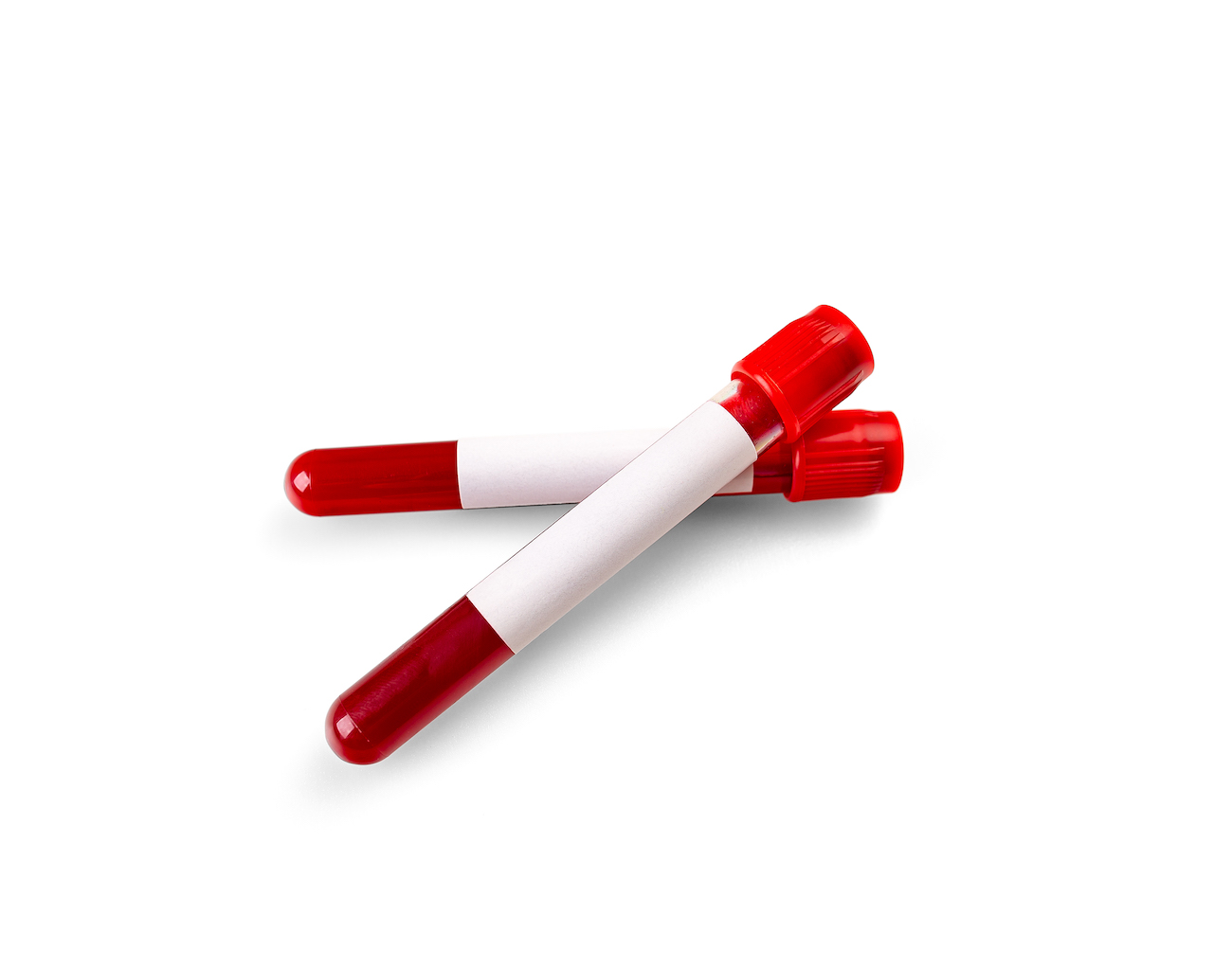
Myth Buster: Genetic Health Testing is Expensive
POPULAR MYTH: Genetic health testing is expensive, confusing, and a passing fad.
With their striking intelligence and undeniable charm, have long held a special place in the hearts of dog enthusiasts worldwide. These remarkable herding dogs, known for their elegant appearance and unwavering loyalty, are much more than just a pretty face. Collies have a rich history as working dogs, initially bred in the rugged Scottish Highlands for their herding prowess.
However, their popularity transcends their pastoral origins; they’ve become beloved family companions and show dogs. In this article, we’ll delve into the captivating world of collies, exploring their unique characteristics, versatile abilities, and the special bond they forge with their human companions. Whether you’re a seasoned collie owner or simply curious about these charismatic canines, prepare to be captivated by the multifaceted charm of these beautiful dogs.
Written By: The Dog Journal
Photo Credit: Wyndlair Collies
The exact identity of the individual or group that first bred the collie is unclear due to the breed’s long and ancient history. Collies evolved over centuries in the border regions of Scotland and England, where they were developed by local shepherds and farmers for their herding abilities.
Queen Victoria, who reigned over the United Kingdom from 1837 to 1901, was not only a significant monarch but also a prominent figure in the history of the Collie breed. Her influence in shaping the Collie can be attributed to her love for dogs and her patronage of the breed.
Queen Victoria’s association with Collies began during her frequent trips to the Scottish Highlands, where she developed a fascination with these elegant and intelligent dogs. It is said that during one of her visits to Balmoral Castle in Scotland in the mid-19th century, Queen Victoria became enamored with the local working Collies she encountered. She took a particular interest in the Rough Collie variety, which was known for its lush, flowing coat and striking appearance.
The Queen’s preference for Rough Collies contributed significantly to the breed’s popularity and refinement. Her royal patronage helped establish the breed’s reputation as an elegant and desirable companion animal, rather than just a working dog. As a result, more breeders began to focus on developing and improving the breed’s appearance, temperament, and show potential. In 1860, Queen Victoria acquired a Rough Collie named “Sharp” during a visit to Scotland, which further increased the breed’s visibility and popularity. She also played a role in standardizing the breed’s appearance and promoting its distinct traits. Queen Victoria’s influence extended beyond the United Kingdom, as her dogs and their offspring were often given as gifts to foreign dignitaries, spreading the fame of the Rough Collie internationally.
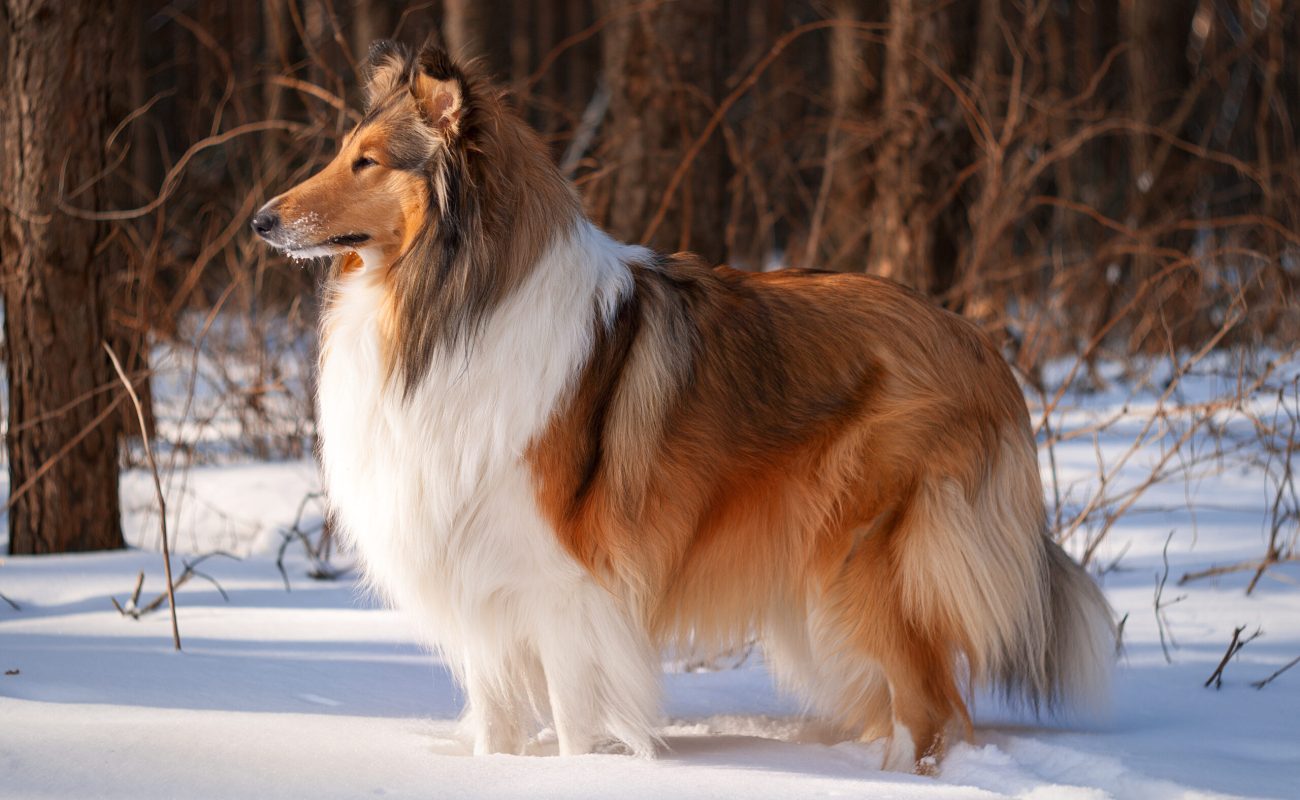
The Collie breed was introduced to the United States by early Scottish and English immigrants who brought their dogs with them when they settled in America. These early Collies served as the foundation for the breed’s development in the United States. One notable figure in the early promotion of the Collie breed in the U.S. was Francis Butler, an American breeder and enthusiast who played a pivotal role in popularizing and refining the Collie in the late 19th century. He imported Collies from the United Kingdom and played a significant part in establishing the breed’s standards in the United States. Francis Butler’s breeding program aimed to produce Collies with the desired traits for both herding and show purposes.
Another influential figure was Albert Payson Terhune, an American author who wrote popular stories and books featuring Collies, particularly his famous Collie character named Lad. Terhune’s writings romanticized the breed and contributed to its popularity as a family pet.
The American Kennel Club (AKC) officially recognized the Collie breed in 1885, further solidifying its status as a distinct breed in the United States. This recognition and the efforts of various breed enthusiasts, including Butler and Terhune, helped establish the Collie as a beloved breed in American homes.
Collies are versatile and adaptable dogs that thrive in lifestyles catering to their need for physical and mental stimulation, as well as their strong desire for companionship and attention. Their active nature demands a daily routine that includes long walks, playtime, and engaging activities like agility or obedience training to help them expend energy and stay mentally sharp. Collies’ intelligence shines when given opportunities for mental stimulation through puzzle toys, interactive games, and regular training sessions using positive reinforcement methods.
These social canines form strong bonds with their human family members and are well-suited for households where they receive attention and companionship. They are excellent family pets, known for their loyalty and gentle disposition, especially with children. While Collies can adapt to apartment living with sufficient exercise, they thrive in homes with outdoor space where they can roam safely. Overall, Collies flourish in an environment that balances physical activity, mental engagement, and social interaction, making them loving and devoted companions for those who meet their needs.
Collies, with their luxurious double coat, are renowned for their stunning appearance. However, maintaining their coat’s beauty and overall health does require a commitment to grooming. The grooming requirements for Collies vary depending on whether they have a rough or smooth coat.
For Rough Coat Collies, a significant amount of attention is needed due to their long, flowing fur. Regular brushing several times a week is essential to prevent mats and tangles from forming. Pay special attention to areas with feathering, like the legs and chest. During shedding seasons, which typically occur twice a year, brushing becomes even more critical to remove loose hair and prevent excessive shedding around the home. Occasional baths can help keep their coat clean and odor-free. It’s also vital to check their ears regularly for signs of infection and to trim their nails as needed. Additionally, Collies with rough coats may benefit from professional grooming to maintain their trademark mane and tail in top condition.
Smooth Coat Collies have a shorter, sleeker coat that requires less maintenance than their rough-coated counterparts. While they do shed, it’s not as pronounced as in rough-coated Collies. A weekly brush to remove loose hair and dirt is generally sufficient to keep their coat in good condition. Like all dogs, they should have their ears checked regularly and their nails trimmed as needed. Occasional baths can help keep them clean and fresh, but they don’t require the same level of grooming attention as roughcoated Collies. Overall, Collies, regardless of their coat type, thrive on the bonding experience of grooming and benefit from regular care to keep their coat healthy and attractive.
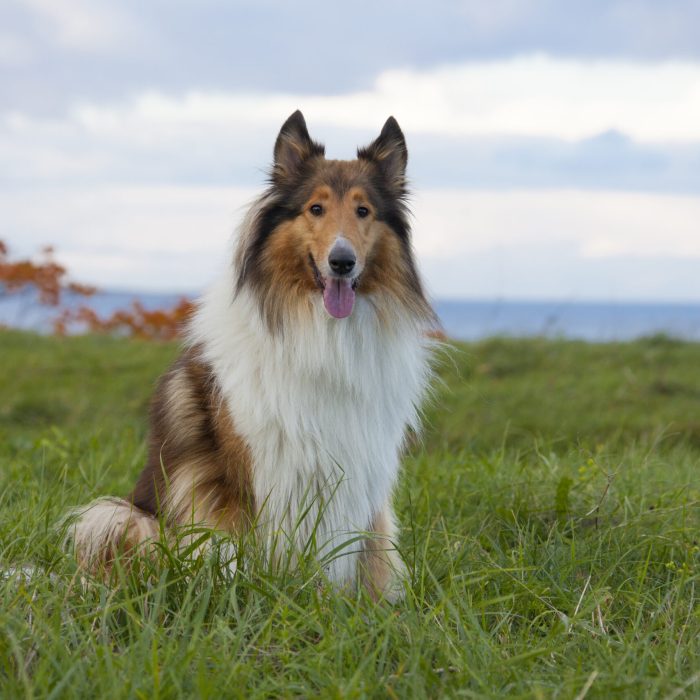
Rough coat and smooth coat Collies are two distinct varieties of the same breed, both recognized by the American Kennel Club (AKC) and many other kennel clubs and breed organizations. The primary difference between them lies in their coat types:
Both rough and smooth coat Collies share the same breed standard in terms of conformation, temperament, and overall characteristics. The primary difference is in their coat type, and they are judged based on the same breed standard criteria when participating in dog shows or competitions. Both varieties are equally recognized and valued within the Collie breed community, and they make wonderful pets and companions. The four recognized colors are “Sable and White,” “Tri-color,” “Blue Merle” and “White.” There is no preference among them. The “Sable and White” is predominantly sable (a fawn sable color of varying shades from light gold to dark mahogany) with white markings usually on the chest, neck, legs, feet and the tip of t h e tail. A blaze may appear on the foreface or skull or both. The “Tricolor” is predominantly black, carrying white markings as in a “Sable and White” and has tan shadings on and about the head and legs. The “Blue Merle” is a mottled or “marbled” color predominantly blue-grey and black with white markings as in the “Sable and White” and usually has tan shadings as in the “Tri-color.” The “White” is predominantly white, preferably with sable, tricolor or blue merle markings.
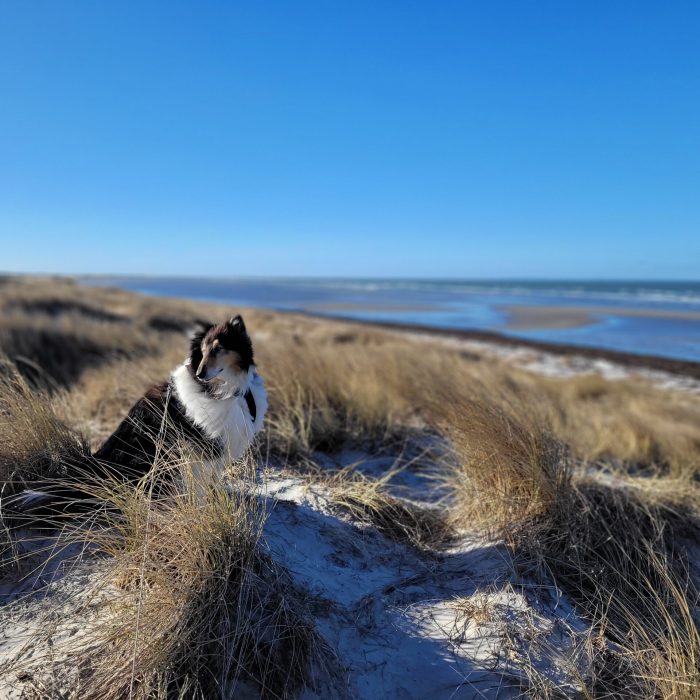
When it comes to the question of famous Collies, one tends to immediately think of Lassie. Lassie is one of the most iconic and beloved fictional canine characters in the world, known for her unwavering loyalty, intelligence, and heroic adventures. She first appeared in a short story titled “Lassie Come-Home,” written by British-American author Eric Knight and published in 1940. Eric Knight’s inspiration for writing the novel is believed to have come from his own experiences growing up with a Collie in England. He had a deep affection for dogs and was captivated by their loyalty and intelligence. Knight’s love for dogs and his observations of their unique qualities likely played a significant role in his decision to write “Lassie Come- Home.” The story was later expanded into a novel and inspired a series of films, a long-running television show, and numerous adaptations in various forms of media.
The core of Lassie’s story revolves around her remarkable journey to reunite with her original family after being sold to another owner due to financial hardship. Her determination, incredible intelligence, and extraordinary ability to overcome obstacles make her a symbol of loyalty and devotion. Lassie’s television debut occurred in 1954 with the premiere of the “Lassie” TV series, which aired for 19 seasons until 1973. The show followed the adventures of Lassie and her various human companions, often involving rescues, solving mysteries, and helping those in need. Lassie’s role as a hero and protector endeared her to audiences of all ages.
Over the years, multiple generations of Collies have played the role of Lassie, with each dog contributing to the character’s enduring legacy. Lassie has appeared in several movies and television series, as well as in print and merchandise, solidifying her status as a beloved cultural icon. Lassie’s impact on popular culture goes beyond entertainment; she has also played a role in promoting the positive qualities of the Collie breed. Her character has inspired countless people to admire and adopt Collies, appreciating their intelligence, loyalty, and dedication.
Another Collie coming to mind that would fit in the “famous” category is one called Lad. Lad is a fictional Collie character created by American author Albert Payson Terhune. Lad is the central character in a series of heartwarming stories and books penned by Terhune, which celebrated the loyalty, intelligence, and courage of this remarkable Collie.
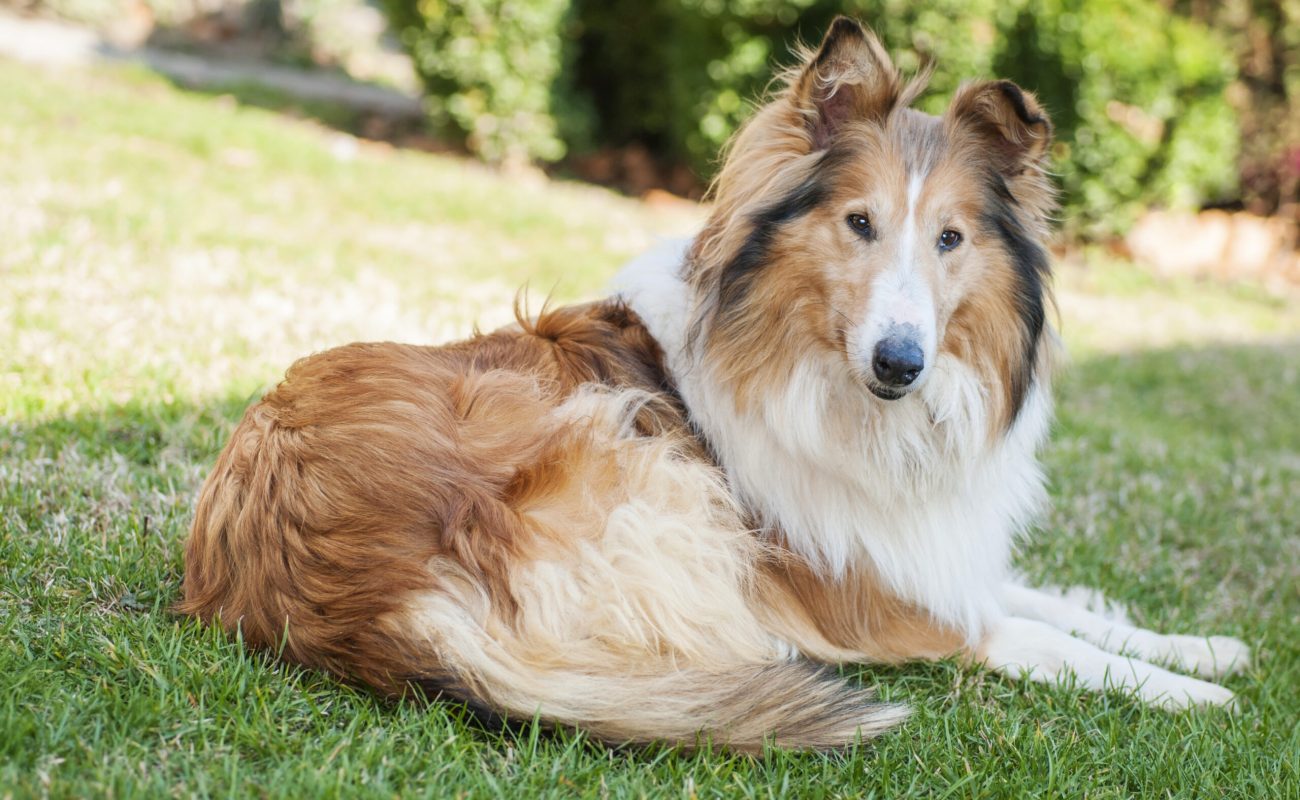
Albert Payson Terhune, born in 1872, was a prolific writer and journalist known for his love of dogs, particularly Collies. He and his wife, Anice Terhune, lived at their estate called “Sunnybank” in New Jersey, where they raised and cared for a kennel of Rough Collies. Terhune’s own experiences with his Collies, including Lad, provided the inspiration for his stories. Lad is portrayed as an intelligent, loyal, and noble Collie who possesses extraordinary qualities. He is known for his unwavering loyalty to his owner, the fictional character of “The Master,” who is loosely based on Terhune himself. The Master and Lad share a deep and profound bond, and their adventures together form the basis of many of Terhune’s stories.
The Lad stories, which began as magazine articles and later evolved into books, became immensely popular during the early 20th century. Albert Payson Terhune’s tales of Lad’s courage, intelligence, and loyalty captivated readers of all ages. These stories not only celebrated the Collie breed but also promoted values like devotion, bravery, and the enduring bond between humans and dogs.
In conclusion, Collies are truly exceptional dogs that have won the hearts of countless dog lovers around the world. Their intelligence, loyalty, and beauty have made them beloved companions, whether in literature and film through iconic characters like Lassie and Lad or in real-life homes as cherished family pets.
Choosing a Collie as a companion can be a rewarding experience for various reasons. Their keen intelligence makes them highly trainable and adaptable to various lifestyles, from active families to individuals seeking a loyal and devoted friend. Collies excel in obedience and agility training and can readily participate in canine sports and activities. Their gentle and patient nature makes them ideal playmates for children, and they form strong bonds with their human families.
Collies’ striking appearance, whether in their classic Rough Coat or sleek Smooth Coat varieties, adds an element of elegance to any home. Their loving and protective nature makes them excellent watchdogs, and they readily offer comfort and companionship in times of need.
In choosing a Collie, one welcomes into their life a steadfast and affectionate companion, a source of joy and loyalty, and a testament to the remarkable connection between humans and dogs. For those seeking a faithful and loving canine companion, the Collie is a choice that promises years of companionship, adventure, and enduring devotion.
HEAD
Both in front and profile view the head bears a general resemblance to a well-blunted lean wedge, being smooth and clean in outline and nicely balanced in proportion. On the sides it tapers gradually and smoothly from the ears to the end of the black nose, without being flared out in backskull (cheeky) or pinched in muzzle (snipy). In profile view the top of the backskull and the top of the muzzle lie in two approximately parallel, straight planes of equal length, divided by a very slight but perceptible stop or break. A midpoint between the inside corners of the eyes (which is the center of a correctly placed stop) is the center of balance in length of head. The end of the smooth, well-rounded muzzle is blunt but not square. The underjaw is strong, clean-cut and the depth of skull from the brow to the under part of the jaw is not excessive. The teeth are of good size, meeting in a scissors bite. Overshot or undershot jaws are undesirable, the latter being more severely penalized. There is a very slight prominence of the eyebrows. The backskull is flat, without receding either laterally or backward and the occipital bone is not highly peaked. The proper width of backskull necessarily depends upon the combined length of skull and muzzle and the width of the backskull is less than its length. Thus the correct width varies with the individual and is dependent upon the extent to which it is supported by length of muzzle. Because of the importance of the head characteristics, prominent head faults are very severely penalized.
EYES
Because of the combination of the flat skull, the arched eyebrows, the slight stop and the rounded muzzle, the foreface must be chiseled to form a receptacle for the eyes and they are necessarily placed obliquely to give them the required forward outlook. Except for the blue merles, they are required to be matched in color. They are almond- shaped, of medium size and never properly appear to be large or prominent. The color is dark and the eye does not show a yellow ring or a sufficiently prominent haw to affect the dog’s expression. The eyes have a clear, bright appearance, expressing intelligent in- quisitiveness, particularly when the ears are drawn up and the dog is on the alert. In blue merles, dark brown eyes are preferable, but either or both eyes may be merle or china in color without specific penalty. A large, round, full eye seriously detracts from the desired sweet expression. Eye faults are heavily penalized.
EARS
The ears are in proportion to the size of the head and, if they are carried properly and unquestionably break naturally, are seldom too small. Large ears usually cannot be lifted correctly off the head, and even if lifted, they will be out of proportion to the size of the head. When in repose the ears are folded lengthwise and thrown back into the frill. On the alert they are drawn well up on the backskull and are carried about three- quarters erect, with about one-fourth of the ear tipping or breaking forward. A dog with prick ears or low ears cannot show true expression and is penalized accordingly.
NECK
The neck is firm, clean, muscular, sinewy and heavily frilled. It is fairly long, carried upright with a slight arch at the nape and imparts a proud, upstanding appearance showing off the frill.
BODY
The body is firm, hard and muscular, a trifle long in proportion to the height. The ribs are well-rounded behind the well-sloped shoulders and the chest is deep, extending to the elbows. The back is strong and level, supported by powerful hips and thighs and the croup is sloped to give a well-rounded finish. The loin is powerful and slightly arched. Noticeably fat dogs, or dogs in poor flesh, or with skin disease, or with no under- coat are out of condition and are moderately penalized accordingly.
LEGS
The forelegs are straight and muscular, with a fair amount of bone considering the size of the dog. A cumbersome appearance is undesirable. Both narrow and wide placement are penalized. The forearm is moderately fleshy and the pasterns are flexible but without weakness. The hind legs are less fleshy, muscular at the thighs, very sinewy and the hocks and stifles are well bent. A cowhocked dog or a dog with straight stifles is penalized. The comparatively small feet are approximately oval in shape. The soles are well padded and tough, and the toes are well arched and close together. When the Collie is not in motion the legs and feet are judged by allowing the dog to come to a natural stop in a standing position so that both the forelegs and the hind legs are placed well apart, with the feet extending straight forward. Excessive “posing” is undesirable.
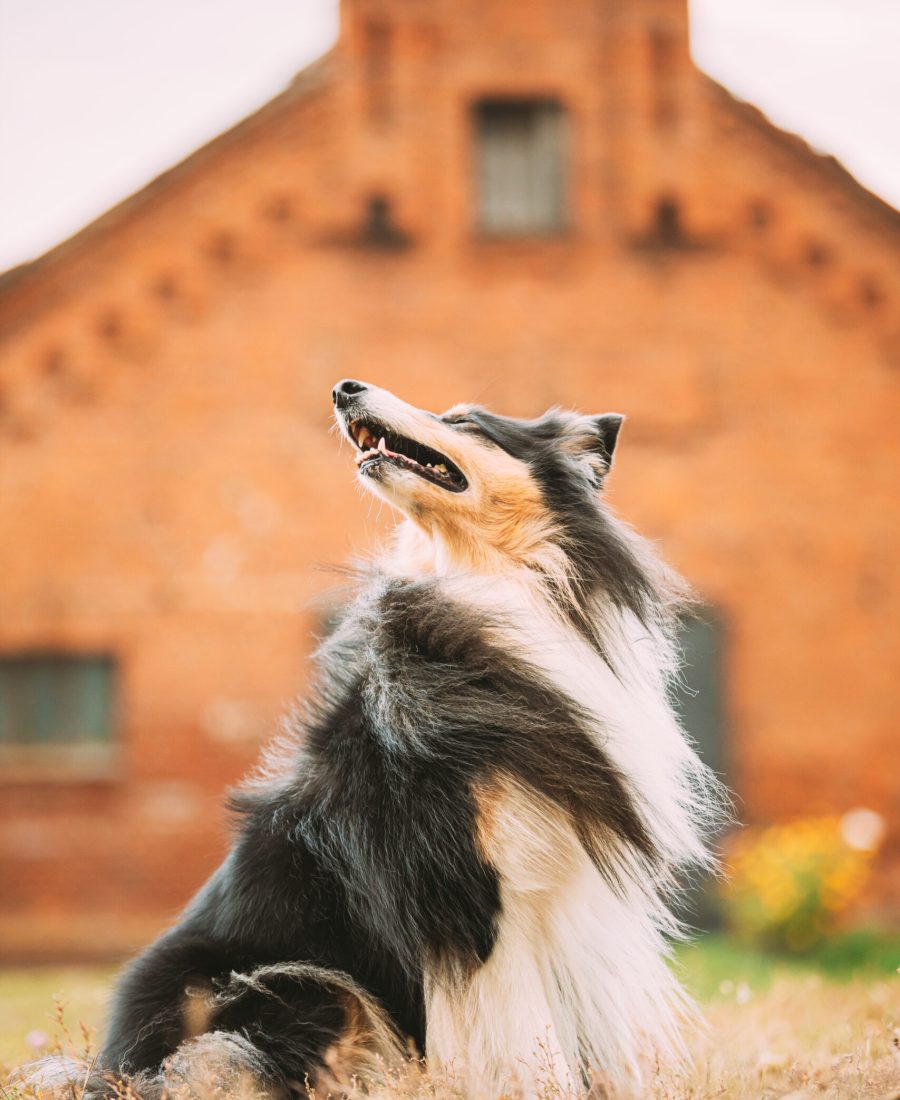
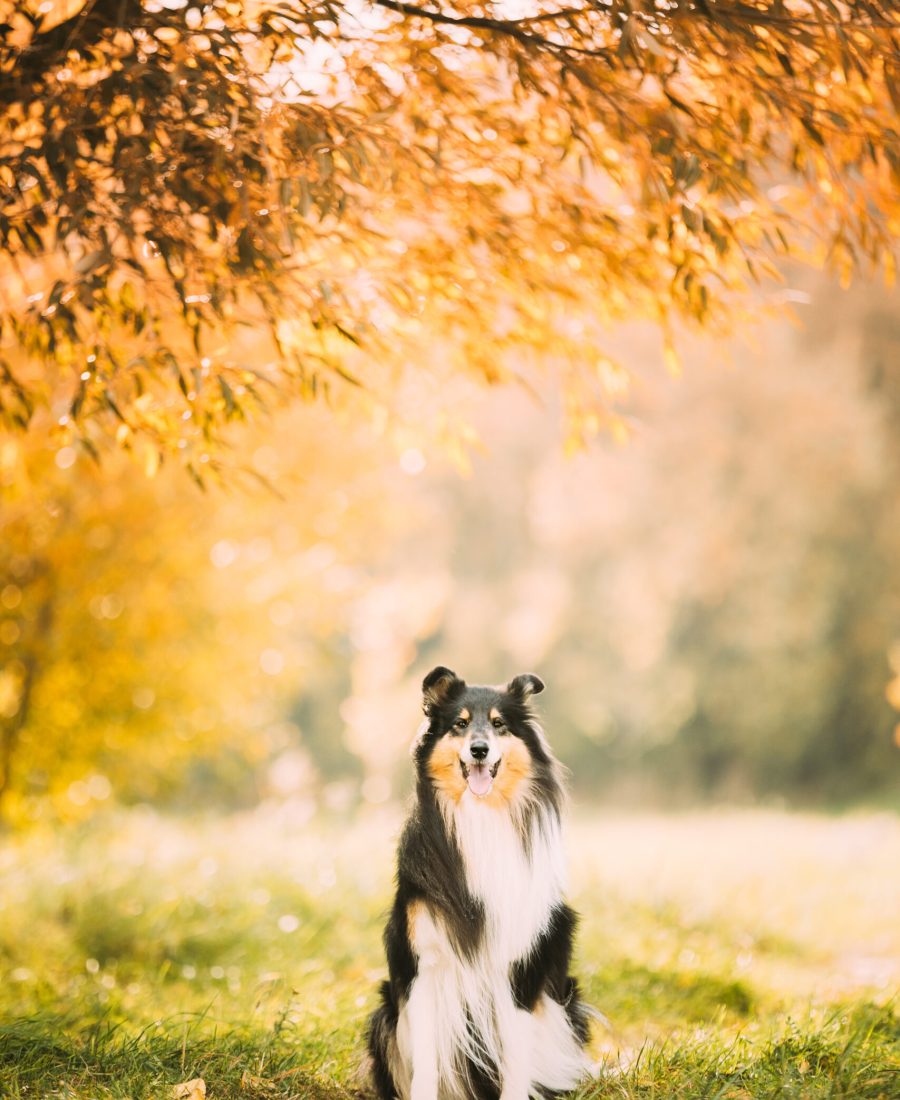
GAIT
Gait is sound. When the dog is moved at a slow trot toward an observer its straight front legs track comparatively close together at the ground. The front legs are not out at the elbows, do not “crossover,” nor does the dog move with a choppy, pacing or rolling gait. When viewed from the rear the hind legs are straight, tracking comparatively close to- gether at the ground. At a moderate trot the hind legs are powerful and propelling. Viewed from the side the reasonably long, “reaching” stride is smooth and even, keeping the back line firm and level. As the speed of the gait is increased the Collie single tracks, bringing the front legs inward in a straight line from the shoulder toward the center line of the body and the hind legs inward in a straight line from the hip toward the center line of the body. The gait suggests effortless speed combined with the dog’s herding heritage, requiring it to be capable of changing its direction of travel almost instantaneously.
TAIL
The tail is moderately long, the bone reaching to the hock joint or below. It is carried low when the dog is quiet, the end having an upward twist or swirl. When gaited or when the dog is excited it is carried gaily but not over the back.
COAT
The well-fitting, proper-textured coat is the crowning glory of the rough variety of Collie. It is abundant except on the head and legs.
The outer coat is straight and harsh to the touch. A soft, open outer coat or a curly outer coat, regardless of quantity is penalized.The undercoat, however, is soft, furry and so close together that it is difficult to see the skin when the hair is parted. The coat is very abundant on the mane and frill. The face or mask is smooth. The forelegs are smooth and well feathered to the back of the pasterns. The hind legs are smooth below the hock joints. Any feathering below the hocks is removed for the show ring. The hair on the tail is very profuse and on the hips it is long and bushy. The texture, quantity and the extent to which the coat “fits the dog” are important points.
COLOR
The four recognized colors are “Sable and White,” “Tricolor,” “Blue Merle” and “White.” There is no preference among them. The “Sable and White” is pre- dominantly sable (a fawn sable color of varying shades from light gold to dark mahogany) with white markings usually on the chest, neck, legs, feet and the tip of the tail. A blaze may appear on the foreface or backskull or both. The “Tri- color” is predominantly black, carrying white markings as in a “Sable and White” and has tan shadings on and about the head and legs. The “Blue Merle” is a mottled or “marbled” color predominantly blue-grey and black with white markings as in the “Sable and White” and usually has tan shadings as in the “Tri-color.” The “White” is predominantly white, preferably with sable, tricolor or blue merle markings.
SIZE
Dogs are from 24 to 26 inches at the shoulder and weigh from 60 to 75 pounds. Bitches are from 22 to 24 inches at the shoulder, weighing from 50 to 65 pounds. An undersize or an oversize Collie is penalized according to the extent to which the dog appears to be undersize or oversize.
EXPRESSION
Expression is one of the most important points in considering the relative value of Collies. Expression, like the term character is difficult to define in words. It is not a fixed point as in color, weight or height and it is something the uninitiated can properly understand only by optical illustration. In general, however, it may be said to be the combined product of the shape and balance of the skull and muzzle, the placement, size, shape and color of the eye and the position, size and carriage of the ears. An expression that shows sullenness or which is suggestive of any other breed is entirely foreign. The Collie cannot be judged properly until its expression has been carefully evaluated.
SMOOTH
The Smooth Variety of Collie is judged by the same Standard as the Rough Variety, except that the references to the quantity and distribution of the coat are not applicable to the Smooth Variety, which has a short, hard, dense, flat coat of good texture, with an abundance of undercoat.

POPULAR MYTH: Genetic health testing is expensive, confusing, and a passing fad.
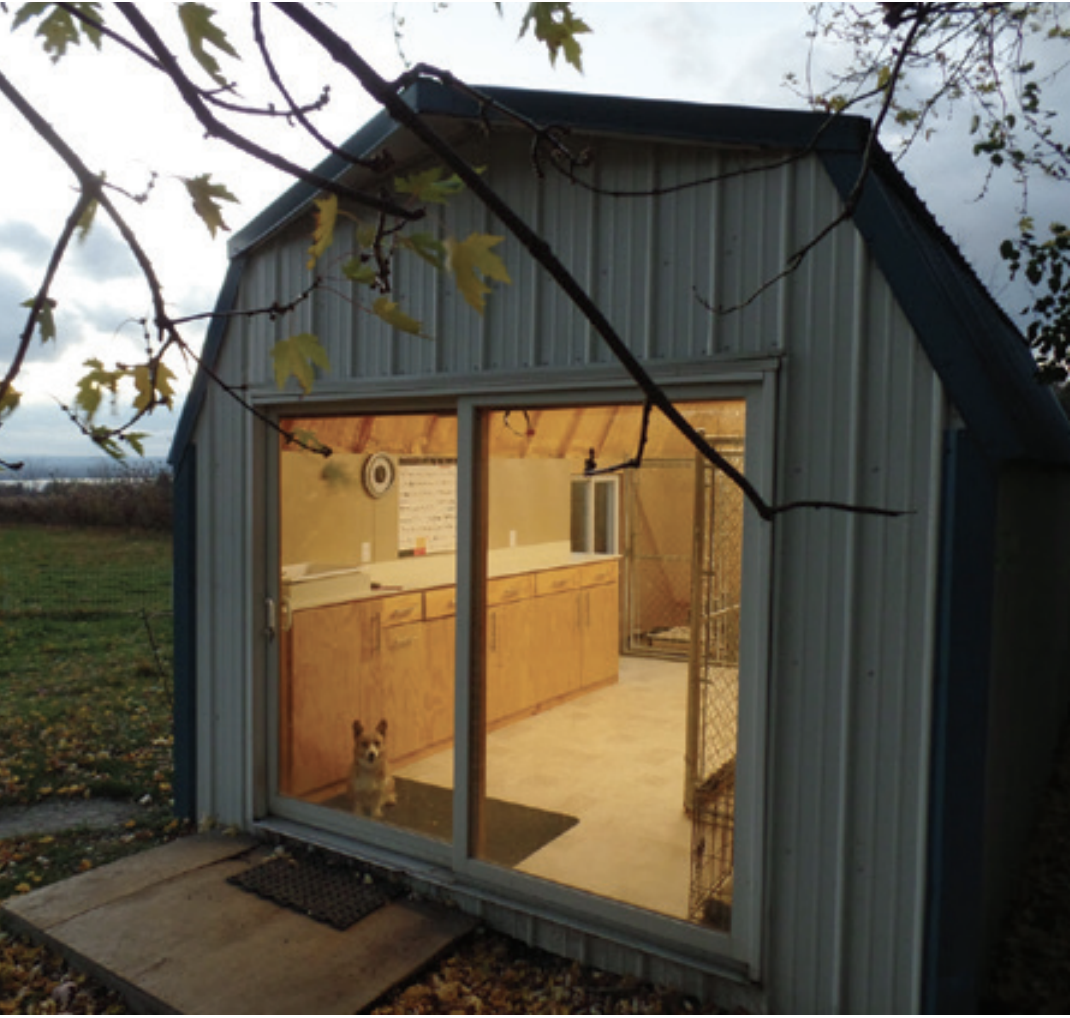
Hi fellow dog breeders and canine lovers! My name is Timothy. I’m 18 and live in the Finger Lakes region of New York. I am a new breeder who has more passion than patience, and has so far spent more time reading about dog breeding than actually breeding dogs.
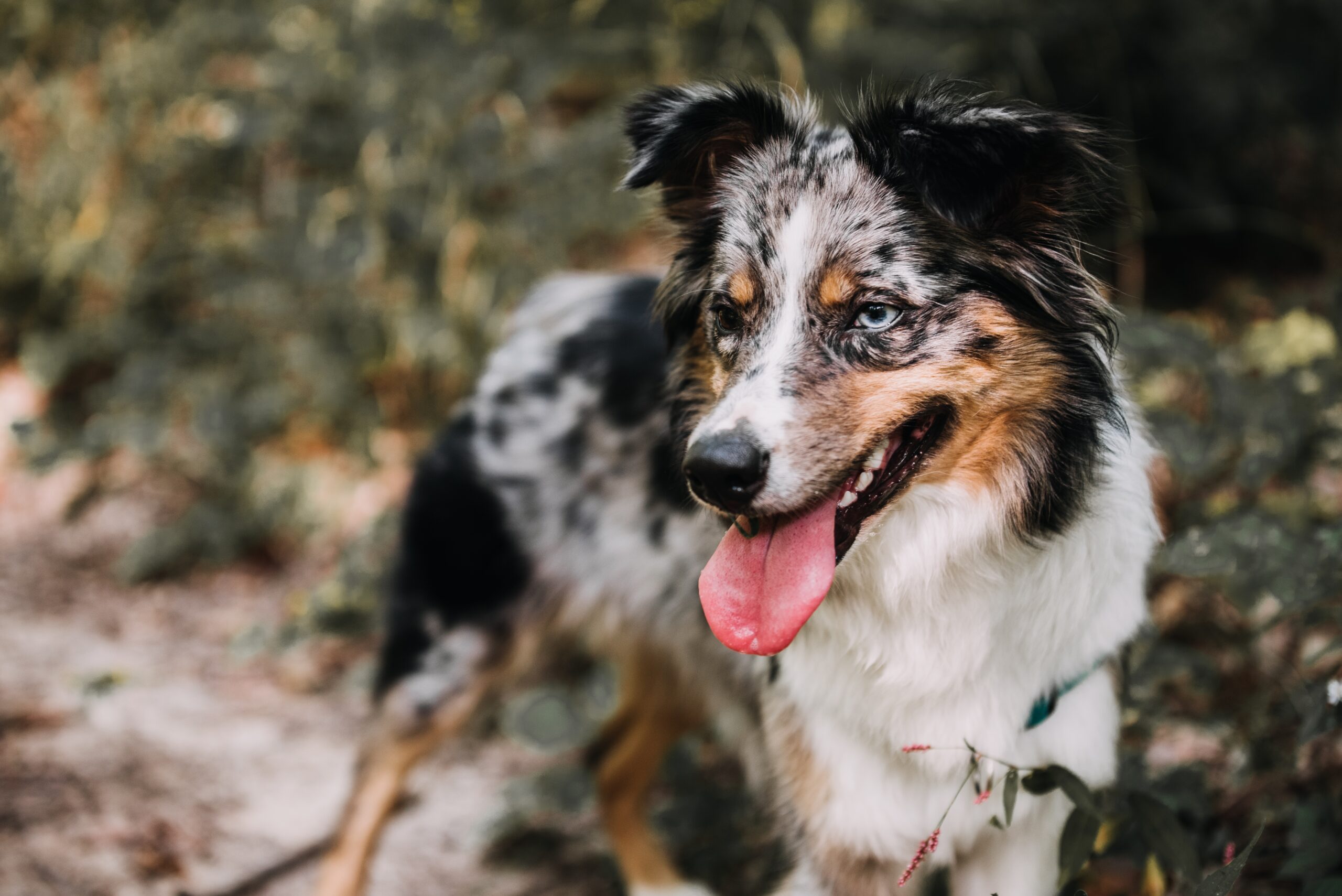
Extra! Extra! What makes the Merle in dog coats? The science behind the pattern Written by: Caroline Coile, PhD Merle in dogs is one of the